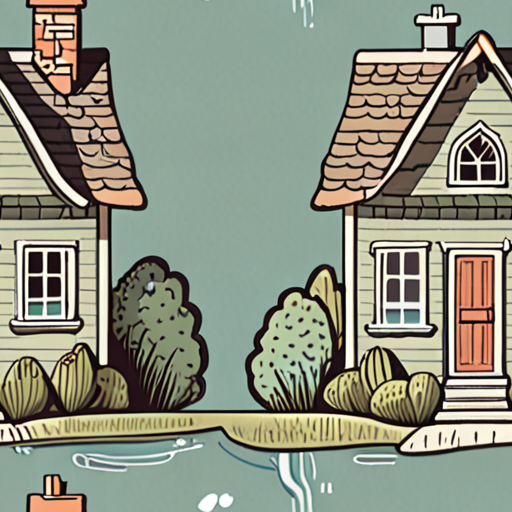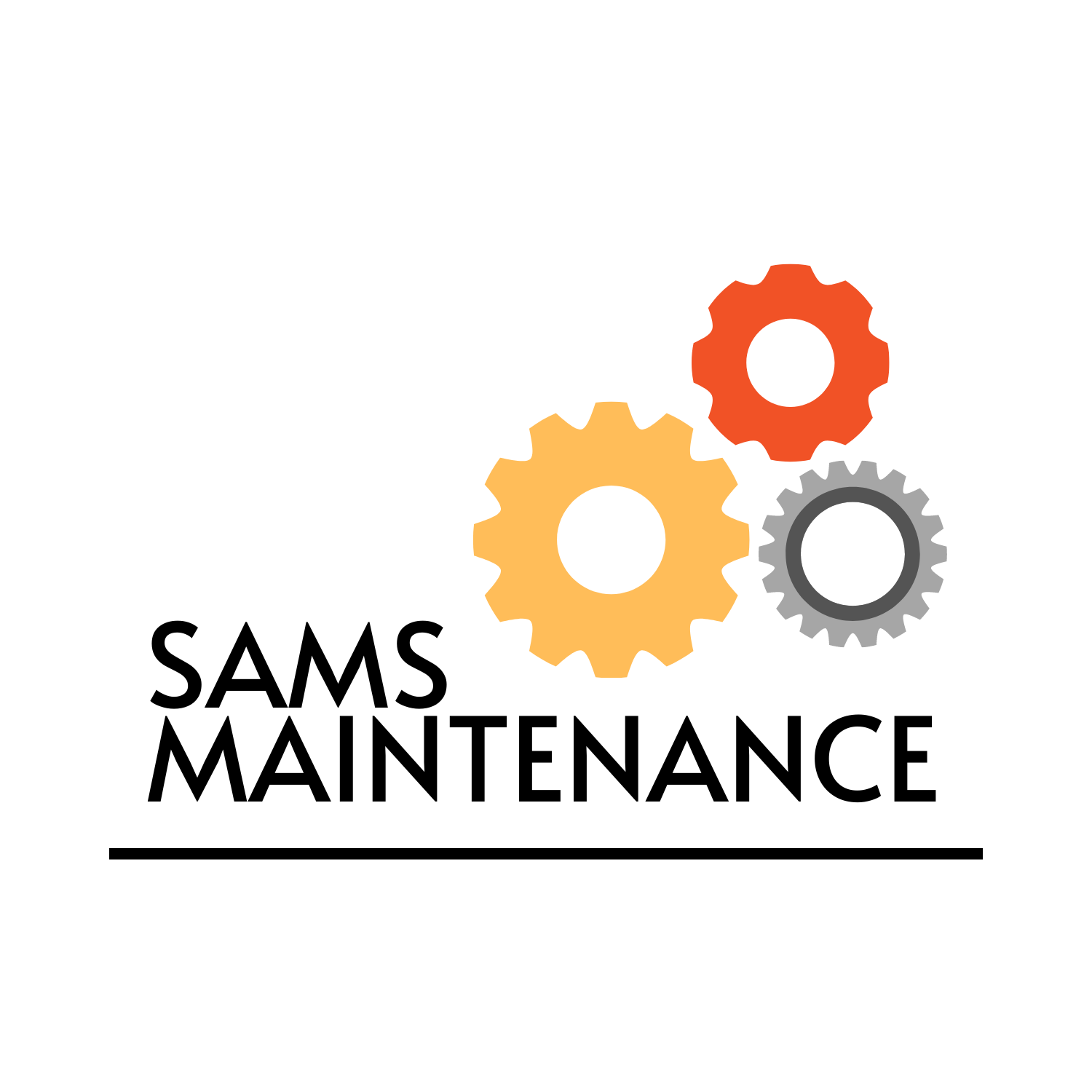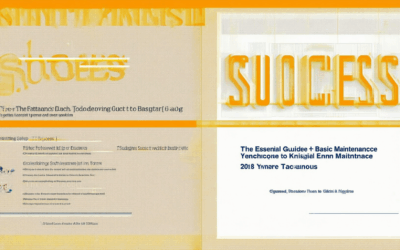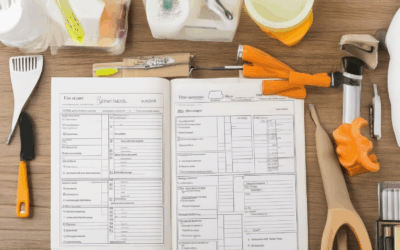Homeownership comes with its fair share of responsibilities, and keeping up with routine home maintenance can feel overwhelming at times. Whether it’s understanding the basics of home upkeep, budgeting for necessary repairs, or knowing when it’s time to tackle a bigger project, many homeowners find themselves struggling to keep pace with their homes’ needs. This is where a well-curated home maintenance blog can be an invaluable resource, offering guidance, tips, and insights to help you manage your property effectively.

What is the 1 rule for home maintenance?
When it comes to home maintenance, there’s no one-size-fits-all rule, but a well-maintained home requires consistent care and attention. Here’s a breakdown of essential tips to keep your home in great shape:
- The 1% Rule for Budgeting : Set aside 1% of your home’s purchase price annually for maintenance. For a $250,000 home, that’s $2,500 yearly or approximately $208 monthly. This covers unexpected repairs and routine checks.
- Regular Inspections : Conduct regular home inspections, especially for critical systems like HVAC, plumbing, and electrical components. Early detection of issues can save money in the long run.
- Preventive Measures : Regularly maintain items like gutters, roofs, and chimneys to prevent costly damage. Replace worn-out parts before they fail.
- Professional Check-Ups : Schedule annual professional evaluations for major systems. A qualified inspector can identify potential problems and offer solutions.
- Emergency Preparedness : Keep a checklist of emergency contacts and procedures handy. Knowing who to call in case of a repair emergency can save valuable time.
For more detailed guidance and tools, visit [Sams Maintenance](https://www.samsmaintenance.com/) or explore resources from trusted partners like [HomeAdvisor](https://www.homeadvisor.com/), [Angie’s List](https://www.angieslist.com/), and [FixerUpper](https://fixerupper.com/). These platforms offer comprehensive support for homeowners looking to maintain their properties effectively.
How Much Does the Average Person Spend on Home Maintenance?
The average person allocates between 1-4% of their home’s value annually for maintenance. For instance, if your home is valued at $200,000, you might expect to spend between $2,000 and $8,000 yearly on upkeep. This budget covers essential tasks like DIY projects, seasonal chores, and preventative fixes.Factors influencing these costs include the size of your home, its age, and your location. Larger properties typically require more funds, while smaller apartments may cost less. Regularly checking for issues and addressing them promptly can help manage expenses effectively.To streamline your efforts, consider setting aside a portion of your monthly income for maintenance. This approach ensures predictable spending and helps avoid unexpected repair costs. Explore our guide to budgetingfor more strategies.By understanding these averages and planning ahead, you can maintain your home efficiently and comfortably. Remember, proactive maintenance saves money in the long run and preserves your investment.
How to Start a Home Improvement Blog
To begin a successful home improvement blog, follow these organized steps:
- Choose a Memorable Blog Name – Select a name that reflects your niche, such as “DIY Home Solutions” or “Modern Renovations.” Use tools like Google Keyword Planner to find catchy options.
- Platform Selection – Decide between self-hosted platforms like WordPress (recommended for flexibility), Blogger , or hosted solutions like Medium or Squarespace.
- Content Creation – Write detailed, original posts focusing on specific topics like how-tos , product reviews , and home improvement guides . Include professional photos and videos using platforms like Unsplash or YouTube .
- SEO Optimization – Research keywords using tools like Ahrefs . Optimize titles, meta descriptions, and headers with these keywords. Build internal links strategically within your content.
- Blog Promotion – Submit your blog to home improvement directories like Doozey and share content on social media platforms like Facebook and Instagram .
- Monetization Strategies – Implement affiliate marketing programs like Amazon Associates . Offer sponsored posts and consider adding Google AdSense for ad revenue.
- Community Engagement – Respond to comments and engage with followers on social media to foster a loyal audience. Use Twitter and Facebook groups to share tips and seek feedback.
- Legal Considerations – Protect your content with Creative Commons Licensing and establish a Privacy Policy and Terms of Service page.

What Home Maintenance Should I Be Doing?
As a new homeowner, staying on top of home maintenance is essential to keep your property safe and functional. Here’s a comprehensive guide to the key tasks you should prioritize:
1. Gutter Maintenance
**Why:** Gutters channel water away from your home, preventing potential water damage.
**What to Do:** Clean out gutters twice a year—spring and fall. Use a ladder, trowel, and garden hose to remove debris. Check for leaks and ensure downspouts are directed away from your home.
2. HVAC System Checks
**Why:** Proper HVAC function ensures your home stays comfortable year-round.
**What to Do:** Change air filters every month. Inspect ductwork for leaks or blockages. Schedule professional inspections twice a year to ensure optimal performance and energy efficiency.
3. Plumbing Checks
**Why:** Early detection of plumbing issues prevents costly repairs.
**What to Do:** Look for visible leaks around sinks, tubs, and pipes. Test water pressure and temperature. Use a plunger or drain cleaner for slow drains, avoiding harsh chemicals.
4. Appliance Maintenance
**Why:** Regular appliance care extends their lifespan and efficiency.
**What to Do:** Clean the lint trap in your dryer after each use. Check washing machine hoses for cracks or kinks and replace as needed. Monitor the refrigerator water filter and stove burners for cleanliness. Inspect the exhaust vent on your stove for blockages.
5. Electrical System Inspections
**Why:** Electrical issues can pose serious hazards, so they require attention.
**What to Do:** Check for warm outlets and test GFCI outlets. Look for tripped breakers and reset them. Update outdated wiring and install surge protectors. Never attempt major electrical work yourself; contact a professional.
6. Roof and Foundation Inspections
**Why:** A healthy roof and foundation contribute to your home’s structural integrity.
**What to Do:** Inspect for missing or damaged shingles and faulty flashing. Examine the foundation for cracks or shifts. Consider hiring a professional for thorough checks.
7. Landscaping and Outdoor Tasks
**Why:** Proper landscaping enhances your home’s curb appeal and safety.
**What to Do:** Trim trees and clear gutters to prevent damage. Adjust sprinklers to avoid overwatering and fix leaks promptly to conserve water and protect your lawn.
8. Fire Safety Measures
**Why:** Fire safety is critical for protecting your family and belongings.
**What to Do:** Monthly, test smoke detectors and CO detectors. Ensure fire extinguishers are charged and ready. Plan escape routes and conduct fire drills to prepare for emergencies.
9. Home Updates and Renovations
**Why:** Regular updates keep your home energy-efficient and safe.
**What to Do:** Replace outdated windows and doors for improved insulation and security. Upgrade older systems like HVAC and plumbing to enhance efficiency and reliability.
10. Annual Professional Inspection
**Why:** A professional eye catches issues you might miss, ensuring your home remains in top shape.
**What to Do:** Schedule an annual inspection covering roofing, plumbing, HVAC, and electrical systems. Address any findings promptly to prevent minor issues from becoming major problems.
By incorporating these tasks into your routine, you’ll maintain your home’s health and value effectively. Remember to use the right tools and seek professional help when necessary to ensure everything runs smoothly.
How to Learn Basic Home Maintenance
To master basic home maintenance, follow these organized steps:
- Understand Home Systems Basics:** Familiarize yourself with essential systems like plumbing, electrical, HVAC, and roofing. Knowing where key components are located and understanding their functions can prevent emergencies.
- Gather Essential Tools:** Equip yourself with tools like a screwdriver set, wrench, pliers, hammer, and multimeter. Don’t forget safety gear: gloves, goggles, and a mask.
- Utilize Resources:** Explore educational platforms like YouTube for tutorials and guides. Consider attending local DIY workshops for hands-on learning and expert advice.
- Practice on Your Property:** Start with manageable tasks such as organizing storage spaces or cleaning gutters. Gradually progress to more complex projects like fixing a leaky faucet.
- Join a Community:** Engage with forums or social media groups focused on home maintenance. Share experiences, seek help, and offer tips to enhance your learning journey.
- Stay Informed:** Create a checklist of monthly maintenance tasks, such as checking the furnace filter or testing smoke detectors. Regular inspections help prevent issues.
- Take It Slowly:** Learn at your own pace, ensuring comprehension before moving to more challenging tasks. Celebrate achievements to stay motivated and build confidence.
By systematically approaching each aspect, you’ll gain the knowledge and confidence to manage basic home maintenance effectively.

Organizing Home Maintenance: A Comprehensive Guide
To maintain your home effectively, organization is key. Here’s a step-by-step guide to help you stay on top of your home maintenance routine:
1. Create a Maintenance Checklist
- Exterior Checkup: Inspect roof, walls, fences, and decks for signs of wear or damage.
- Interior Inspection: Look for leaks under sinks, around pipes, and check for pests.
- Appliance Checks: Test smoke detectors and CO detectors, and inspect major appliances like the water heater.
- Garden Care: Trim trees, bushes, and lawn, and check sprinkler systems for proper function.
- Ductwork and HVAC: Replace air filters and schedule annual professional tune-ups.
2. Establish a Seasonal Maintenance Schedule
- Spring: Clean gutters, check foundation for cracks, and service lawn equipment.
- Summer: Inspect fencing, seal driveway, and prepare for hurricane season.
- Fall: Clean leaves, check chimneys, and inspect windows for drafts.
- Winter: Clear snow, check pipes for freezing, and test heating systems.
3. Monthly Home Inspections
- Brief Checkups: Walk through your home once a month to identify potential issues early.
- Specific Areas: Focus on high-use areas like kitchens and bathrooms for leaks and wear.
- Safety First: Test smoke detectors and carbon monoxide levels monthly.
4. Organize Tools and Supplies
- Keep a toolbox nearby with essential tools like a screwdriver, wrench, and measuring tape.
- Store cleaning supplies and hardware in labeled bins for easy access.
5. Document Everything
- Take photos of problem areas and note down repair details.
- Keep a record of all maintenance activities for future reference.
6. Budget for Repairs
- Set aside a portion of your income each month for unexpected repairs.
- Prioritize repairs based on urgency to avoid costly fixes later.
7. Stay Educated
- Learn basic DIY skills through tutorials and blogs to handle more tasks confidently.
- Stay updated on the latest maintenance techniques and safety standards.
Conclusion
By following this organized approach, you can efficiently manage your home maintenance, preventing minor issues from becoming major problems. Regular inspections, proactive measures, and staying informed will ensure your home remains in excellent condition.




0 Comments